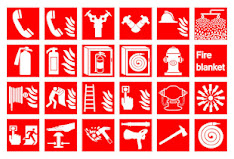Fire hose pipe
Fire Hose Pipe and Types
Introduction
Fire hose pipes are essential firefighting equipment used to transport water or other fire suppressants under high pressure to extinguish fires efficiently. They come in different sizes and types, each tailored for specific applications. Understanding the various types of fire hose pipes is crucial for firefighters and emergency responders to ensure their effectiveness during critical situations. This article delves into the different types of fire hose pipes available, their unique features, and optimal use in firefighting operations.
##Types of Fire Hose Pipes
###1. Attack Hose
- Designed for aggressive firefighting operations
- Made from durable materials such as polyester and rubber
- Lightweight, facilitating easy handling and maneuverability
###2. Supply Hose
- Built for transporting large volumes of water from hydrants to firefighting teams
- Constructed using rubber and reinforced with additional layers for strength
- Resistant to abrasion and punctures, ensuring durability during prolonged use
###3. Booster Hose
- Compact and lightweight for rapid deployment
- Primarily used to increase pressure in the fire line when attached to a hydrant or fire engine
- Constructed with a durable synthetic rubber cover for enhanced flexibility
###4. Forestry Hose
- Ideal for forest firefighting and wildland operations
- Manufactured with lightweight materials for easy portability
- Reinforced with synthetic yarn to withstand harsh outdoor conditions
###5. Suction Hose
- Designed to draw water from a water source (such as a lake or pool) for firefighting purposes
- Constructed with a durable rubber or PVC inner lining to resist suction-induced collapse
- Available in various lengths and diameters to accommodate different water sources
##Choosing the Right Fire Hose Pipe
Selecting the appropriate fire hose pipe depends on several factors, such as the intended use, water supply, and environmental conditions. Here are some considerations to keep in mind when choosing a fire hose pipe:
###1. Hose Diameter
- Different hose diameters are available, including 1.5", 1.75", 2", and 2.5
- Choose a diameter suitable for the required water flow and available water supply
###2. Hose Length
- Fire hose pipes come in standard lengths of 50, 75, and 100 feet
- Assess the distance from the water source to the fire site to determine the appropriate length
###3. Material Composition
- Consider the environment where the fire hose pipe will be used (urban, wildland, industrial, etc.)
- Select a hose material that is resistant to heat, abrasion, and chemicals prevalent in the respective environment
##Conclusion
Understanding the different types of fire hose pipes and their unique features is essential for effective firefighting operations. Whether it be attack hoses for aggressive fire suppression or suction hoses for drawing water from alternative sources, choosing the right hose for the job is crucial. By considering factors like diameter, length, and material composition, firefighters can optimize their firefighting efforts and protect lives and property more efficiently. Stay prepared and informed to combat fires with the appropriate fire hose pipe.








Post a Comment